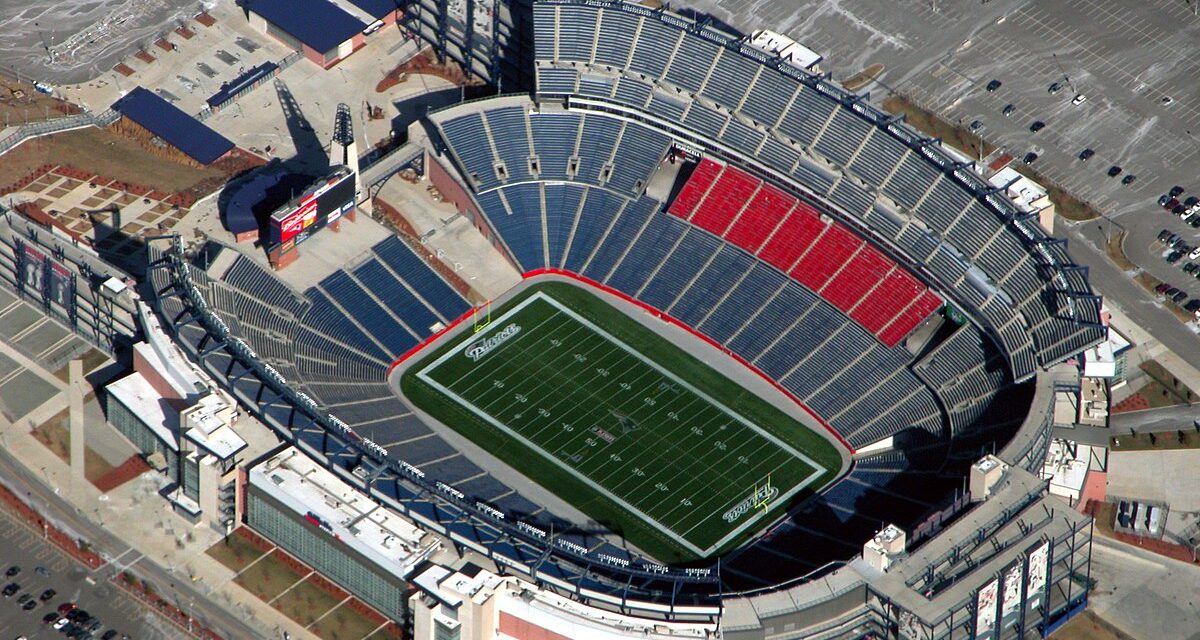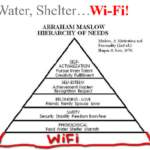I would define Very High Density (VHD)/Capacity WLAN as those areas with a very large number of devices (100 or more) in a single coverage area/service area/cell or RF collision domain (i.e. ~2000 – 6000 square feet indoors depending on building characteristics, TX power, etc.) These are typically areas where a very large number of users congregate. For example, stadiums, arenas, conference centers/rooms, training/learning centers/rooms, call centers, lecture halls, auditoriums, cafeterias, gymnasiums.
Your WLAN Design Standard or Design should include Very High Density design requirements and methodology such as:
- Identify Very High Density (VHD) areas on the floor plans. Very High Density (VHD) areas are defined as those areas with a very large number of client devices (100 or more client devices) in a single coverage area/service area/cell or RF collision domain (i.e. ~2000-6000 square feet indoors depending on building characteristics, TX power, etc.). These are typically areas where a very large number of users congregate. For example, stadiums, arenas, conference centers/rooms, training/learning centers/rooms, call centers, lecture halls, auditoriums, cafeterias, gymnasiums.
- Pre-install Onsite Surveys are required in Very High Density deployment scenarios.
- Design for 20 MHz channels on 5 GHz and 20 MHz channels on 2.4 GHz in Very High Density (VHD) areas.
- Disable Excess/Surplus 2.4 GHz radios in Very High Density (VHD) areas. An alternative may be putting them in sensor mode depending on the vendor’s equipment being deployed. Also, some vendor deployments may be able to perform this automatically. Excess 2.4 GHz radios are defined as when there are more than 3 2.4 GHz radios enabled (given there are only 3 non-overlapping channels available) in a single coverage area/service area/cell or RF collision domain (i.e. ~3000-6000 square feet indoors).
- Design static channel/TX power plan for Very High Density (VHD) areas not using the same channel or adjacent channels (including 5 GHz) on nearby APs and decreasing TX power to just high enough to meet design requirements.
- Design for a maximum of 31 client devices per AP (17 on 5 GHz radio and 14 on 2.4 GHz) in Very High Density (VHD) areas to meet the above design requirement of a minimum of 5 Mbps of actual throughput per client device to support High Definition (HD) video applications (see bullets below to understand how 31 was determined)
- With 2×2, 11ac wave 2, 5 GHz @ 20 MHz with short guard interval (4 micro seconds), the max data rate per radio is 173.3 Mbps and actual throughput per radio is ~86 Mbps (assuming Wi-Fi overhead and accounting for some interference). With a design requirement of 5 Mbps of actual throughput per client device, that is support for 17 client devices per 5 GHz radio @ 20 MHz.
- With 2×2, 11n, 2.4 GHz @ 20 MHz with short guard interval (4 micro seconds) the max data rate per radio is 144.4 Mbps and actual throughput per radio is ~72.2 Mbps (assuming Wi-Fi overhead and accounting for some interference). With a design requirement of 5 Mbps of actual throughput per client device, that is support for 14 client devices per 2.4 GHz radio @ 20 MHz.
- To determine total number of client devices:
- Identify the number of users for the Very High Density (VHD) area of the floor plan.
- Estimate an 80% take rate.
- Design for an average of 2 client devices per user.
- To determine the number of APs:
- Divide total number of client devices by 31 (17 client devices per 5 GHz radio and 14 client devices per 2.4 GHz radio) to determine the number of APs required.
- If more than 3 APs (more than 93 total client devices), each additional AP must have the 2.4 GHz radios disabled (given there are only 3 non-overlapping channels available).
- Divide the remainder of total client devices above 93 by 17 (17 client devices per 5 GHz radio) to determine how many additional 5 GHz only APs are required.
- Dual 5 GHz APs can be used to decrease the number of additional 5 GHz only APs required. If Dual 5 GHz APs are used, divide by 34 instead (17 client devices per 5 GHz radio times 2 5 GHz radios for a total of 34).
- Add this to the initial 3 APs to determine how many total APs are required with a maximum of 25x 5 GHz radios (assuming all DFS channels are supported by vendor’s equipment) and 3x 2.4 GHz radios in the Very High Density (VHD) area.
- Space the radios out evenly as close to users as possible throughout the Very High Density (VHD) area. Use building characteristics/attenuation to your advantage (walls, seats populated with people, etc.) to create smaller cells.
This blog is part of a series on the WLAN Design Standard/Design including High Density, Very High Density and other Specialized Deployment Scenario considerations.







Recent Comments